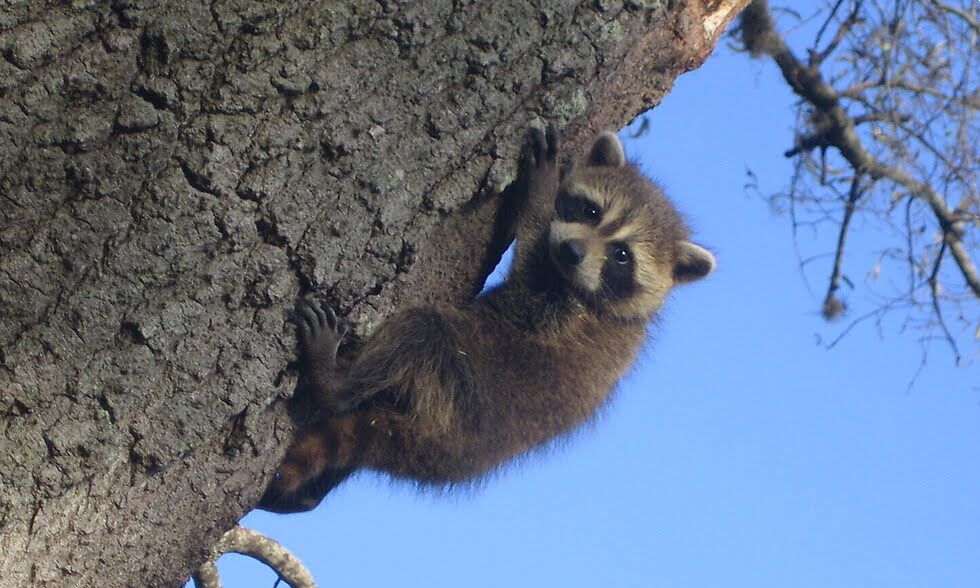When you talk about pests in New York City, you’d be forgiven for thinking that rats were the only thing you’d need to worry about. After all, the rat population in New York City is said to be one of the biggest in the world. There are even documentaries about it on Netflix.
What if we were to tell you that there was another pest that you needed to concern yourself with, in New York City? Do you think you could guess what it was?
If you guessed raccoons, you’d be right. According to reports, conflicts and encounters between people and humans have more than doubled over recent years, making it another problem in a city that is already struggling to contain the population of various species that it already has. Between the rats and the people, you’d barely think there was room for another critter, but the raccoon has somehow muscled its way and it’s tearing its way through the streets like you wouldn’t believe.
Homeowners and renters from Brooklyn to The Bronx alike have complained about the problem, with ripped garbage bags and knocked-over trash cans just the tip of the raccoon-mess iceberg. Pet cats have been viciously attacked by the feral raccoons, and entire gardens have been uprooted and chewed through. Although cute and quite funny when you watch them for a period of time, raccoons are feral creatures and it wise to remember that. They act in a feral way ... We shouldn’t be surprised at the mess, noise, and upheaval they cause.
The problem with raccoons in New York City areas like Manhattan and Queens is that the calls for wildlife rehabilitators to remove the animals are coming in almost daily, and some rehabilitators choose NOT to deal specifically with raccoons. The reason for this? Raccoons cannot be released back into the wild again, once they have been trapped. The only appropriate way to dispose of a raccoon that has been captured in New York City is to kill it. It’s an animal well-known for its ability to carry and transmit the rabies virus, and this is a disease that scientists and medical professionals have been fighting a slow battle with for many years. A raccoon that has been trapped must be taken to a professional to be tested over for the rabies virus, as well as other diseases, before it can be rehabilitated. Many homeowners are unwilling to go to such lengths, alongside requesting permission to release the rabies. If you don’t own the land, you can’t release it there. The only place you are permitted to release the animal is on the land it was initially trapped on. What’s the point in releasing the problem back into the place you’re trying to remove the problem from?
Some wildlife control experts are unwilling to euthanize seemingly perfectly healthy raccoons, and because they can’t release them into the wild, it leaves them with no choice but to turn down the job.
The reason that raccoons are such a big problem in New York City now is because of this trap-and-release action. In some cases, the raccoon is ‘humanely’ and unlawfully released back into local parks or patches or wild land. This raccoon was captured around buildings, so the first thing it will do is head right back in the direction of those buildings, or other buildings like them. Once they’ve explored the delights of residential properties once, they won’t just go back into the wild again. They’ll look for that same building, and if they can’t find it, they’ll just look for another one that does the job just as well.
At the same time, raccoons are so much smarter than you’d think. They learn stuff – pick things up very quickly. They have learned that humans mean food, and that human homes mean warmth, shelter, water, and more food. They’re moving in on us. Even worse than that; they’re moving in WITH us. Some raccoons have learned how to open latches on windows and doors. Others know how to tear into window screens and vent coverings.
Raccoons that have been trapped once and released back into the wild again are likely to have learned their lesson. They’ll start to learn what a trap is and what it means, and for them, it doesn’t mean good things. They are torn from their homes, family, and friends, dumped in a brand new place that they don’t know. It then takes them forever to make their way back home again, or they need to start life all over again – find a brand new home, new sources of food, new mates, new friends, and new raccoons to call family. We’re led to believe that raccoons are quite antisocial creatures, but they do tend to congregate together in the winter, both males and females clubbing together to keep warm. The females will also come together when they are pregnant and after they have had their young. As the old saying goes, there is safety in numbers. They use each other to keep themselves and their youngsters alive.
If you choose to catch and then release a wild raccoon, you are contributing to the above problem. If you capture the animal and then euthanize it, you’re killing a perfectly healthy animal unnecessarily, making yourself feel pretty bad. If even some wildlife rehabilitators don’t want to deal with that on their conscience, you would be forgiven for feeling the same. There ARE wildlife rehabilitators in Manhattan, Brooklyn, Queens, and The Bronx that deal with raccoons and we urge you to seek a professional opinion before taking this matter into your own hands.

